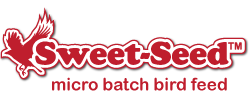Best Nesting Material for Hummingbirds

As the world’s smallest birds, hummingbird nests are also small. Despite their size, however, these nests still need to adequately support and shelter delicate eggs and give tiny hatchlings room to grow. What nesting materials are best to do just that?
Hummingbird Nest Numbers
While different hummingbird species do build slightly different nests based on their own sizes, habitats, and nesting preferences, most hummingbird nests are about 1.25-1.5 inches in diameter, or the size of a golf ball or ping pong ball. Meanwhile, the eggs weigh less than 1/50 of an ounce (about half a gram), and are roughly the size of a small jelly bean or a coffee bean. Each individual nest will have 1-3 eggs with the most common clutch size being 2 eggs, and hummingbirds will raise 1-3 nests of baby birds every year. Multiple broods are more common in southern regions that have a longer nesting season, and many hummingbirds will reuse the same nest – with some repairs – for multiple broods or even multiple years. Just what nesting materials do hummingbirds choose to best support their youngsters in safe, secure nests?
Top Nesting Materials Hummingbirds Will Use
Hummingbirds can be very resourceful when building their nests and will use a wide variety of materials for construction. The base of the nest may be the crook of a branch, a sturdy fork in a dense shrub, or even an outdoor lamp, clothesline, or basketball net. From there, these birds will industriously build the nest using materials such as:
- Plant down
- Leaf hairs
- Dandelion fluff
- Down feathers
- Spider silk
- Cotton fibers
- Thistle down
- Dry plant stems
- Grass clippings
- Moss
- Lichen
- Shredded bark
- Cattail fluff
- Milkweed down
- Pet fur
- Alpaca fur
- Sheep wool
Exactly which materials a female hummingbird will chose – only female hummingbirds build and maintain the nest – will vary depending on her own preferences as well as which materials are most easily available. Some sturdier materials help fill in the nest base, while softer and more elastic materials build up the walls and offer flexibility as young birds grow. Sticky bits, such as spider silk, are critical to bind the nest together, while some materials – lichen, moss, and shredded bark – are often used on the outside of the nest as camouflage to help conceal it from potential predators.
Providing Nesting Materials for Hummingbirds
The easiest, no-stress way to provide the best nesting materials for hummingbirds to use is to simply ensure that natural materials are left safe and intact for the birds to find. Let flowers go to seed to create fluff and down, and leave grass clippings on the lawn – which will also nourish the grass, no need for extra fertilizer! Minimize or eliminate chemical use – herbicides, pesticides, insecticides – so hummingbirds will not be building their nests with toxic coatings or other contamination.
If you have a dog or cat, any shed hair can be put out for hummingbirds to use, but avoid offering pet hair as nesting material if your pets have recently had strong flea or tick treatments. Similarly, you can offer natural cotton fluff in a suet cage feeder or onion sack for the birds to pick at, but take care that it is sheltered from rain or else it may become matted and unsuitable for use.
It should be noted that dryer lint should never be offered to hummingbirds – or any birds – as nesting material. While it may seem soft and fluffy, dryer lint is packed with concentrated chemicals, dyes, and perfumes that can be toxic to the birds, as well as longer strands that could tangle around tiny feet, necks, and wings.
Whatever material you put out for hummingbirds to use in nest-building, place it close to their favorite flowerbeds, perches, or nectar feeders so they can see it easily. Once they notice it, hummingbirds will happily take advantage of such an easy source of nesting material and you may become the host to a new hummingbird family.
